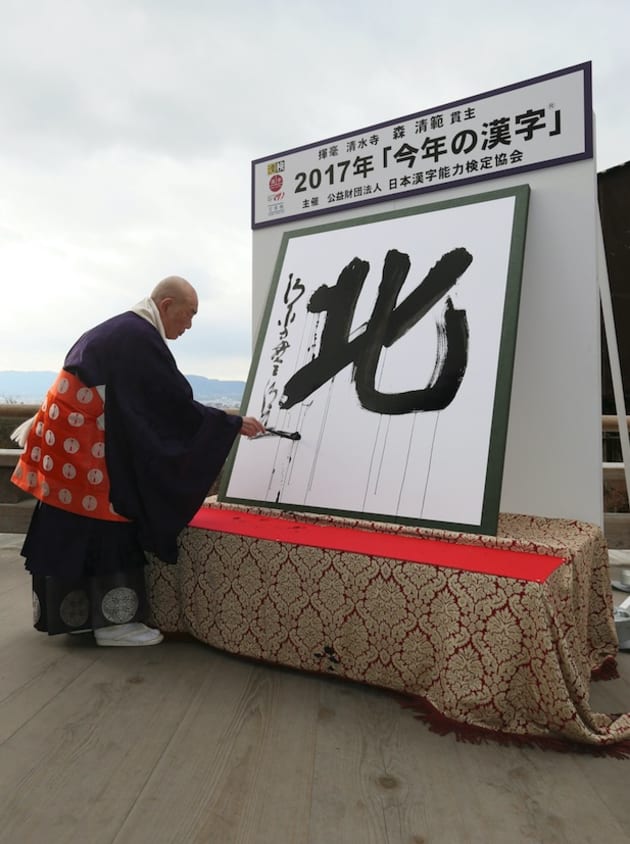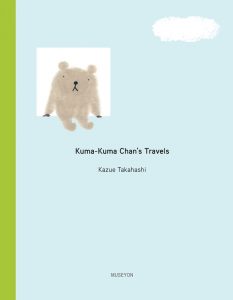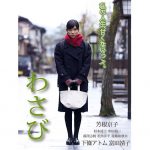WIT Life #327: New York Asian Film Festival
Written by professional Writer/Interpreter/Translator Stacy Smith (Kumamoto-ken CIR, 2000-03), WIT Life is a periodic series about aspects of Japanese culture such as film, food and language. Stacy starts her day by watching Fujisankei’s newscast in Japanese, and here she shares some interesting tidbits and trends along with her own observations.
In addition to being in the middle of a major heat wave, we are in the midst of film festival season here in the city. Specifically I’m talking about the current New York Asian Film Festival (NYAFF), which is in its 17th year! This year I have the honor of interpreting for several actors and directors during the festival, and so far I’ve worked on the films Dynamite Graffiti and The Hungry Lion. For the former, both director Masanori Tominaga and star Tasuku Emoto were on hand, and you can access a Facebook recording of their Q&A here. For the latter, director Takaomi Ogata attended the screening and his Q&A can be found here.
This year’s recipient of the festival’s Star Asia Lifetime Achievement Award was Masato Hara, who Read More
WIT Life #326: New York Japan CineFest 2018
Written by professional Writer/Interpreter/Translator Stacy Smith (Kumamoto-ken CIR, 2000-03), WIT Life is a periodic series about aspects of Japanese culture such as film, food and language. Stacy starts her day by watching Fujisankei’s newscast in Japanese, and here she shares some interesting tidbits and trends along with her own observations.
Last night I caught day 1 of the New York Japan CineFest held at Asia Society. 2018 marks the seventh anniversary of the event, and it seems to get better every year. The lineup featured six short films that ranged in length from eight to 28 minutes, and included two documentaries.
My favorite was the final film And So We Put Goldfish in the Pool from Makoto Nagahisa, which clo cked in at the longest 28 minutes but went by in a flash. It is based on a true story of four 15-year old girls from a small town in Saitama who released 400 goldfish into their high school pool in order to escape the boredom of their daily lives. Its zany tone and fast-paced story kept the audience captivated and laughing. Despite its humorous tone, it poignantly addresses the universal feelings experienced during high school and certainly brought back memories of that time in my life. Last year it received the Short Film Grand Jury Prize at Sundance (you can watch the film via this link), and it was Nagahisa’s directorial debut.
cked in at the longest 28 minutes but went by in a flash. It is based on a true story of four 15-year old girls from a small town in Saitama who released 400 goldfish into their high school pool in order to escape the boredom of their daily lives. Its zany tone and fast-paced story kept the audience captivated and laughing. Despite its humorous tone, it poignantly addresses the universal feelings experienced during high school and certainly brought back memories of that time in my life. Last year it received the Short Film Grand Jury Prize at Sundance (you can watch the film via this link), and it was Nagahisa’s directorial debut.
Another highlight of the program was Sugihara Survivors, which told the story Read More
WIT Life #325: Shogun World
Written by professional Writer/Interpreter/Translator Stacy Smith (Kumamoto-ken CIR, 2000-03), WIT Life is a periodic series about aspects of Japanese culture such as film, food and language. Stacy starts her day by watching Fujisankei’s newscast in Japanese, and here she shares some interesting tidbits and trends along with her own observations.
Hope everyone is enjoying the Memorial Day weekend! I’m out in Colorado, heading into the tail end of a three-week State Department interpreting gig on the topic of disability access and inclusion. This was something I knew very little about before starting, and have come to understand more about the situation both here and in Japan. Our last week will be spent in Seattle, where I’m sure there’s lots more to learn…
The HBO drama Westworld recently entered its second season, and while I am not a regular viewer I tuned in as I had heard it would have a Japan focus. The show tells the story of life-like robots in a Wild West-themed amusement park, and the complications that arise when they become sentient. This time around the series is set during Japan’s Edo Period in a place called Shogun World. Great pains were taken to ensure accuracy, even down to the Japanese that would have been spoken at the time. And it doesn’t hurt that the lineup of Japanese actors includes standouts like Hiroyuki Sanada and Rinko Kikuchi, who play a ronin robot and lead geisha respectively.
For more about Shogun World, check out this Japan Times article.
WIT Life #324: Inland Sea
Written by professional Writer/Interpreter/Translator Stacy Smith (Kumamoto-ken CIR, 2000-03), WIT Life is a periodic series about aspects of Japanese culture such as film, food and language. Stacy starts her day by watching Fujisankei’s newscast in Japanese, and here she shares some interesting tidbits and trends along with her own observations.
This weekend I caught Kazuhiro Soda’s Inland Sea (港町) at the Film Society of Lincoln Center’s Art of the Real. The festival’s opening film about John McEnroe whet my appetite for more documentaries, and I was looking forward to seeing the latest from Soda after enjoying his film Campaign at Japan Society several years back. Inland Sea is set near the hometown of his wife Kiyoko Kashiwagi, who is also the film’s producer. They were both on hand to introduce the film and take part in a post- screening Q&A. In his introduction Soda shared that the film adheres to their Ten Commandments, which include tenets such as no research before shooting, not setting any themes or goals before editing, and paying for the production on their own (to the dismay of producer Kashiwagi).
Inland Sea takes place in the port city of Ushimado in Okayama Prefecture, population 7000. Many of the younger residents have already left, and the documentary’s main subjects are the octagenarians Wai-chan and  Kumiko, respectively a fisherman and the town crier. They are both captivating subjects, but as a cat lover I was most entranced by the stray felines who congregate at the home of transplants to the area who have been feeding them. I was engaged throughout the film’s two hour plus duration, but it definitely could have been cut in places, especially the long takes on the fishing boat.
Kumiko, respectively a fisherman and the town crier. They are both captivating subjects, but as a cat lover I was most entranced by the stray felines who congregate at the home of transplants to the area who have been feeding them. I was engaged throughout the film’s two hour plus duration, but it definitely could have been cut in places, especially the long takes on the fishing boat.
During the Q&A Soda explained that the reason he chose to make a black and white film (except for the last color scene) was that he wanted to portray Read More
WIT Life #323: Japan Week 2018
Written by professional Writer/Interpreter/Translator Stacy Smith (Kumamoto-ken CIR, 2000-03), WIT Life is a periodic series about aspects of Japanese culture such as film, food and language. Stacy starts her day by watching Fujisankei’s newscast in Japanese, and here she shares some interesting tidbits and trends along with her own observations.
 Japan Week 2018 is taking place through the weekend at Grand Central’s Vanderbilt Hall, and this year’s theme is 3D Trick Art. Sponsored by the Japan National Tourism Organization (JNTO), the event strives to create an Instagrammable, interactive experience for visitors. In addition to the regular array of booths from travel agencies, various regions in Japan and Japanese food and drink purveyors, there are several large backdrops into which you can insert yourself for the ultimate selfie. My favorite was the bowl of ramen into which you can become one of the ingredients, and others include becoming a topping for sushi, helping to carry the mikoshi at a matsuri and shuttling around a sumo wrestler in a rickshaw (Fujifilm is even on hand to help you print out these funny shots after you take them!). Read More
Japan Week 2018 is taking place through the weekend at Grand Central’s Vanderbilt Hall, and this year’s theme is 3D Trick Art. Sponsored by the Japan National Tourism Organization (JNTO), the event strives to create an Instagrammable, interactive experience for visitors. In addition to the regular array of booths from travel agencies, various regions in Japan and Japanese food and drink purveyors, there are several large backdrops into which you can insert yourself for the ultimate selfie. My favorite was the bowl of ramen into which you can become one of the ingredients, and others include becoming a topping for sushi, helping to carry the mikoshi at a matsuri and shuttling around a sumo wrestler in a rickshaw (Fujifilm is even on hand to help you print out these funny shots after you take them!). Read More
WIT Life #322: Then They Came for Me
Written by freelance Writer/Interpreter/Translator Stacy Smith (Kumamoto-ken CIR, 2000-03), WIT Life is a periodic series about aspects of Japanese culture such as language, film, business, food and politics. Stacy starts her day by watching Fujisankei’s newscast in Japanese, and here she shares some interesting tidbits and trends along with her own observations.

Sign from Japanese-run business telling customers their clothing won’t be brought to the incarceration camp
After interpreting in Manhattan Criminal Court earlier this week, I stopped for lunch in Chinatown and found myself with some time on my hands afterwards. I decided to visit the International Center of Photography and was nicely surprised to find the exhibition Then They Came for Me: Incarceration of Japanese Americans during WWII (through May 6), a comprehensive portrayal of this reprehensible period in American history. It includes works from prominent photographers such as Dorothea Lange and Ansel Adams, letters and other personal mementos, and moving video testimonials from those who were incarcerated or have family members who had been.
From 1942-1946, thousands of Japanese Americans were forcibly relocated to incarceration camps in desert and swamp areas of the Western U.S. The original term for this had been “internment,” but I learned from the exhibition that Japanese American organizations and scholars have developed new terminology in an effort to more accurately reflect the wrongness of what took place. Read More
WIT Life #321: Sato Sakura Gallery
Written by professional Writer/Interpreter/Translator Stacy Smith (Kumamoto-ken CIR, 2000-03), WIT Life is a periodic series about aspects of Japanese culture such as language, film, business, food and politics. Stacy starts her day by watching Fujisankei’s newscast in Japanese, and here she shares some interesting tidbits and trends along with her own observations.
Last September, Chelsea received a great addition to its art scene in the form of the Sato Sakura Gallery. This Japan-born museum has two locations (Fukushima/Tokyo) that specialize in 日本画 (Nihon-ga or traditional Japanese painting). This term and concept was created in response to 西洋画 (Seiyou-ga or Western painting), which made its way to Japan during the Meiji Era (1868). Today the idea of Nihon-ga can refer to both purely traditional Japanese painting, as well as new styles of painting that incorporate Western painting methods while remaining faithful to traditional Japanese painting techniques.
The inaugural exhibit at the new Chelsea location has 桜 (sakura or cherry blossoms) as its theme , and showcases 12 different artists and their works. They range from regular-sized paintings to giant folding screens, and my favorites were from self-proclaimed “flower and cherry blossom maniac” Reiji Hiramatsu. In particular, his work “Playful Carps” piece is impressive. Its bright colors are striking, and I enjoy the playfulness of the fish in a pond with petals filling its surface. I also really like his “Mt. Fuji and Cherry Blossoms,” Read More
, and showcases 12 different artists and their works. They range from regular-sized paintings to giant folding screens, and my favorites were from self-proclaimed “flower and cherry blossom maniac” Reiji Hiramatsu. In particular, his work “Playful Carps” piece is impressive. Its bright colors are striking, and I enjoy the playfulness of the fish in a pond with petals filling its surface. I also really like his “Mt. Fuji and Cherry Blossoms,” Read More
WIT Life #320: アケオメ!
Written by professional Writer/Interpreter/Translator Stacy Smith (Kumamoto-ken CIR, 2000-03), WIT Life is a periodic series about aspects of Japanese culture such as film, food and language. Stacy starts her day by watching Fujisankei’s newscast in Japanese, and here she shares some interesting tidbits and trends along with her own observations.
明けましておめでとうございます! A happy new year of the dog to everyone. This post’s title (Ake ome!) is the abbreviated version of the official Japanese new year greeting (Akemashite omedetou gozaimasu!). Surprisingly, two of my senpai had never heard of this colloquialism before. Perhaps I’m dating myself but I remember it being popular to say during the time I lived in Japan, though I’m not so sure about now (and maybe it wasn’t around when my older colleagues spent time in Japan).
My previous post discussed the kanji of the year (北, kita or north), and I just came across an article highlighting some of Japan’s 2017 buzzwords. Read More
WIT Life #319: 今年の漢字
Written by professional Writer/Interpreter/Translator Stacy Smith (Kumamoto-ken CIR, 2000-03), WIT Life is a periodic series about aspects of Japanese culture such as film, food and language. Stacy starts her day by watching Fujisankei’s newscast in Japanese, and here she shares some interesting tidbits and trends along with her own observations.

As we approach the end of 2017, many of us are reflecting on what was a less-than-stellar year. This was also an anxiety-producing year in Japan, as the designation of this year’s kanji as 北 (kita or north) indicates. It came in with 7104 votes out of the total 153,594 cast, and best captures the mood in Japan amid the heightened nuclear and missile threat posed by North Korea. North Korea has continued to pursue its nuclear weapons and missile programs despite tough new sanctions, including conducting a sixth nuclear test and launching two missiles over 北海道 (Hokkaido) in late summer.
In regard to the selection of 北, other Hokkaido connections were also referenced by respondents. The island’s poor potato crop this year led to nationwide shortages of potato chips, and there is much excitement for 二刀流 (nitouryuu or combination pitcher/slugger) Shohei Otani of Hokkaido baseball team Nippon Ham Fighters making his major league debut with the Anaheim Angels next year.
Coming in second place with 3,571 votes was 政 (sei/matsurigoto or politics). Political scandals, as well as Read More
WIT Life #318: Shuji Terayama
Written by professional Writer/Interpreter/Translator Stacy Smith (Kumamoto-ken CIR, 2000-03), WIT Life is a periodic series about aspects of Japanese culture such as film, food and language. Stacy starts her day by watching Fujisankei’s newscast in Japanese, and here she shares some interesting tidbits and trends along with her own observations.
Last week I had the opportunity to see some amazing works from legendary avant garde Japanese poet, dramatist, writer, film director, and photographer Shuji Terayama. I hadn’t heard of him before, but many critics view him as one of the most productive and provocative creative artists to come out of Japan. He has also been cited as an influence on various Japanese filmmakers from the 1970s onward. The three films screened were Americans, who are you (アメリカ人あなたは), Laura (ローラ) and The Trial (審判).
A special treat was that Laura included the restaging of Terayama’s 1974 film performance with the original actor, Henrikku Morisaki, who was in attendance. This short film feature female strippers who are berating the audience, when all of a sudden a spectator (Morisaki) enters the film. We saw scenes of him as a young man in this role, being stripped and assaulted by the women. At the end of the film he emerged from behind the screen, this time naked and holding his torn clothes. In an interview post-screening, Morisaki told stories about his work with Terayama over the course of almost 17 years. He described Read More
WIT Life #316: Frank Lloyd Wright’s Teikoku Hotel
Written by professional Writer/Interpreter/Translator Stacy Smith (Kumamoto-ken CIR, 2000-03), WIT Life is a periodic series about aspects of Japanese culture such as film, food and language. Stacy starts her day by watching Fujisankei’s newscast in Japanese, and here she shares some interesting tidbits and trends along with her own observations.
This year marks the 150th anniversary of Frank Lloyd Wright’s birth, and celebrations are taking place around the country and world. I recently had the chance to go to MoMA’s Frank Lloyd Wright at 150: Unpacking the Archive (ending October 1 so run to check it out if you haven’t already!). This incredibly comprehensive exhibit looks at Wright’s career from 12 different perspectives, each of which has its own section. There are around 450 works that he made from the 1890s through the 1950s on display, and each section has a video narrated by a scholar in the respective field.
I was particular interested in the section discussing the second version of the Imperial Hotel (帝国ホテル), designed by Wright and built from 1919–1923). It survived the Great Tokyo Earthquake that September, but eventually slipped into decay over time and in 1967 it was decided to demolish the hotel and replace it with a high-rise building. The structure was mostly destroyed, but the iconic central lobby wing and reflecting pool were disassembled and rebuilt at Meiji-mura in Nagoya, which I was lucky enough to visit during a recent business trip.
This is an amazing theme park with a variety of architecture mostly from the Meiji Era (1868-1912), and Read More

“Takahashi’s warm watercolors and relatable stories are guaranteed to entertain readers of all ages, and the latest English-language addition to this series, Kuma-Kuma Chan’s Travels, is every bit as enjoyable as its two predecessors.” (Museyon)
By Stacy Smith (Kumamoto-ken CIR, 2000-03) for JQ magazine. Stacy is a New York City–based provider of top quality Japanese interpreting, translating and writing/editing services. Starting from her initial encounter with Japan in her teens, she has built up a consummate understanding of the country‘s language and culture, enabling her to seamlessly traverse between Japan and the U.S. and serve as a bridge between the two. For more information, visit www.stacysmith.webs.com. As a writer, Stacy also shares tidbits and trends with her own observations in the periodic series WIT Life.
Having spent three years on JET in Kumamoto, home of nationwide sensation Kumamon who didn’t yet exist when I was there, I must honestly say that I approach bear characters with slight trepidation. However, I was delightfully surprised to love every minute of my encounter with Kuma-Kuma Chan, the bear who stars in the eponymous children’s book series written and illustrated by Kazue Takahashi. Her warm watercolors and relatable stories are guaranteed to entertain readers of all ages, and the latest English-language addition to this series, Kuma-Kuma Chan’s Travels, is every bit as enjoyable as its two predecessors.
The previous two books, Kuma-Kuma Chan, the Little Bear (previously reviewed in JQ here) and Kuma-Kuma Chan’s Home, looked at a day in the life of Kuma-Kuma Chan on his own and when a friend comes to visit. Kuma–Kuma Chan’s Travels is a bit more expansive, introducing readers to his world when he takes trips. I love the details at the beginning sharing what he brings with him on his journeys, along with accompanying illustrations such as a Thermos containing hot coffee. We later see him on top of a mountain drinking said coffee while watching the sunrise. These trips take place inside his head, but the descriptive text and beautiful pictures make you feel like you are with him everywhere he goes.
The series as a whole features a strong element of kawaii, or cuteness, which contributes to its Japaneseness. Also, there is an intangible sensibility to the stories that make them feel a bit different than traditional Western children’s books. In the inaugural Kuma–Kuma Chan, the Little Bear, we learn about his daily routine, which includes aspects such as eating a big salad for breakfast with lettuce from his garden and personal grooming like trimming his nails and hair. I particularly liked the scene which shows him during the winter, rolling around to catch the sunlight as the day progresses with the kerosene heater nearby. For many JET alumni, I’m sure this scene will be reminiscent of days spent in school offices where this was the sole source of heat.
For readers seeking a creature of a different nature, the Tyrannosaurus children’s books written and illustrated by Tatsuya Miyanishi is another series worth checking out. It currently features 13 titles, four of which have been published in the U.S. For those who would like to learn about these books and meet the acclaimed author, he will be at the New York and New Jersey locations of Books Kinokuniya at 2 p.m. on October 21 and 22, respectively. On both days, Miyanishi will be reading from and discussing his works, as well as signing books for those with purchased copies. For more dates in Texas, Washington and California, click here.
Kuma-Kuma Chan’s Travels is available October 1. For more information, click here.
For more JQ magazine book reviews, click here.
WIT Life #315: Kew Gardens Festival of Cinema
Written by professional Writer/Interpreter/Translator Stacy Smith (Kumamoto-ken CIR, 2000-03), WIT Life is a periodic series about aspects of Japanese culture such as film, food and language. Stacy starts her day by watching Fujisankei’s newscast in Japanese, and here she shares some interesting tidbits and trends along with her own observations.
Last week the inaugural Kew Gardens Festival of Cinema began, and I’ve had the chance to catch a lot of great films at the two main venues of Kew Gardens Cinema and Queens Museum. Today they screened Persona Non Grata (杉原千畝 スギハラチウネ, 2015), a film about Japanese diplomat Chiune Sugihara (“Japanese Schindler”) who served as a consul in Lithuania from 1939-40 and saved the lives of thousands of Jewish refugees by issuing over 2000 transit visas to Japan. He famously continuing to sign visas even as his train pulled away from the station, and is estimated to have saved over 6,000 lives from the Nazis who invaded Lithuania in 1941. However, his diplomatic career was ruined because he had defied instructions from the Ministry of Foreign Affairs not to issue the visas. Sugihara didn’t know if they had made any difference until being found years later by someone he had helped. He is now considered a hero in Japan, and those he saved have more than 40,000 descendants.
The film stars the phenomenal Toshiaki Karasawa as Sugihara and the always stellar Read More
WIT Life #314: New York Asian Film Festival (NYAFF) 2017
Written by professional Writer/Interpreter/Translator Stacy Smith (Kumamoto-ken CIR, 2000-03), WIT Life is a periodic series about aspects of Japanese culture such as film, food and language. Stacy starts her day by watching Fujisankei’s newscast in Japanese, and here she shares some interesting tidbits and trends along with her own observations.
This weekend concludes the 2017 New York Asian Film Festival (NYAFF), which offered another amazing lineup of films and special guests. This is the 16th year of its running, and it just seems to get better over time. I saw two of the Japanese films screened at Lincoln Center’s Walter Reade Theater, the festival’s venue, and another two I had seen on the plane during a recent business trip to Japan (In this same venue the week before the event I had the chance to see Harmonium (淵に立つ), which was not part of the festival but is another thought-provoking and upsetting Japanese film).
The two film s I saw at the festival were Rage (怒り) and Double Life (二重生活). Rage stayed with me for a while after watching it; it is not a film you can easily shake. It is based on the mystery novel of the same name by Shuichi Yoshida, who also wrote Villain and Parade which were both made into fantastic films (the former directed by Sang-il Lee, who made Rage). The story begins with the heinous murder of a couple in their home, with the young, male killer on the loose.
s I saw at the festival were Rage (怒り) and Double Life (二重生活). Rage stayed with me for a while after watching it; it is not a film you can easily shake. It is based on the mystery novel of the same name by Shuichi Yoshida, who also wrote Villain and Parade which were both made into fantastic films (the former directed by Sang-il Lee, who made Rage). The story begins with the heinous murder of a couple in their home, with the young, male killer on the loose.
Characters from communities in three different parts of Japan (Chiba, Tokyo and Okinawa) are shaken by the appearance of three respective young men who fit the description of the wanted man. As the manhunt unfolds, the more we find out about each suspect the more the suspense builds. I was on the edge of my seat for the majority of the film, but once this fear dissipated the psychological terror of the Read More
WIT Life #313: NY Japan CineFest 2017
WIT Life is a periodic series written by professional Writer/Interpreter/Translator Stacy Smith (Kumamoto-ken CIR, 2000-03). She starts her day by watching Fujisankei’s newscast in Japanese, and here she shares some of the interesting tidbits and trends along with her own observations.
 Last night I attended the first night of the 6th annual NY Japan CineFest 2017 at Asia Society. This is one of my favorite cinematic events in the city, as it is a compilation of Japan-related short films. As usual, there were many thought-provoking selections ranging from documentary to futuristic to artistic.
Last night I attended the first night of the 6th annual NY Japan CineFest 2017 at Asia Society. This is one of my favorite cinematic events in the city, as it is a compilation of Japan-related short films. As usual, there were many thought-provoking selections ranging from documentary to futuristic to artistic.
My favorite was Wasabi from director Bunji Sotoyama, which stars Kyoko Yoshine who you might recognize as the main character from the recently ended NHK morning drama Beppin-san. In this film, she plays high school student Aoi who lives with her depressed father who is no longer able to maintain his sushi shop. She is Read More


